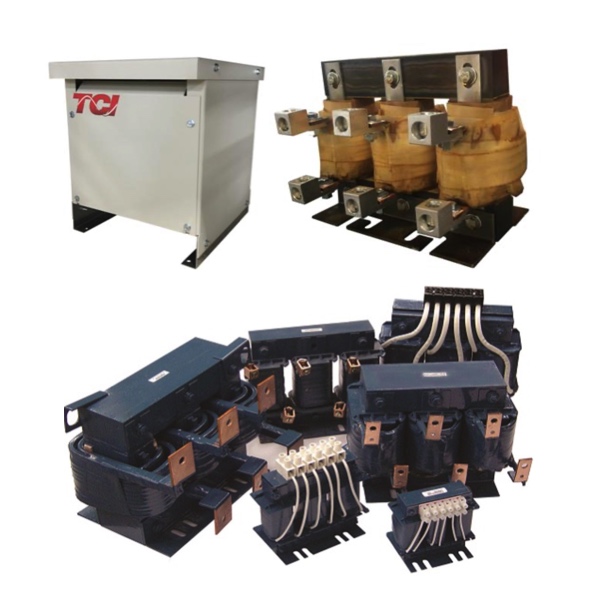Load Reactors For VFDs

Load reactors are used to counteract problems that Variable Frequency Drives (VFDs) introduce into a power system, like harmonic distortion and voltage spikes. They can smooth out these kinds of distortions and help protect everything in the system from the potential harmful effects of those distortions and those synchronized voltages.
The long cable lengths of some systems make them ideal candidates for the use of load reactors. These devices are very good at minimizing the effects of waveform transitions and in reducing high-frequency noise spikes that cables produce. They also protect against voltage stress and power surges, which could otherwise damage motors and other VFD-associated equipment. In systems where multiple motors operate or where a VFD puts out very fast speeds, load reactors can be particularly useful because they aid in maintaining a healthy operation of not only the motor but also all associated system components.
More Information about Load Reactors
Line Reactors vs Load Reactors
A Line reactor (input reactor) is installed on the line side of a variable frequency drive (VFD), between the power supply and the drive. Its primary function is to protect the VFD from disturbances in the power supply, such as voltage spikes, harmonics, and transient surges. A Load reactor (output reactor) is installed on the output side of the VFD, between the drive and the motor. Its primary role is to protect the motor from the effects of the high-frequency switching output of the VFD, such as voltage spikes and reflected waves.
FAQs
How does a load reactor affect power quality in the motor circuits of heavy duty equipment?
A load reactor improves power quality in the motor circuits of heavy-duty equipment by reducing voltage spikes, smoothing the output waveform from VFDs, and minimizing harmonic distortion, which protects the motor and extends its lifespan.
Inductive Load Basics
Electrical load is an electrical component or portion of a circuit that consumes electrical power. For example, a power source such as a battery or generator will have a load which consumes that power, such as a light bulb, motor or television.
There are three types of electrical loads: capacitive loads, resistive loads and inductive loads
Capacitive and Resistive Loads
Capacitive loads are similar to inductive loads in that the current and voltage are out of phase with one another, however, capacitive loads see the current reach its maximum before the voltage, while inductive loads see the voltage reach its maximum before the current. Resistive loads typically consist of things like heating elements.
Inductive Loads
Inductive loads use a coil to produce a magnetic field. The most common types of inductive loads are motors, fans, blenders and pumps. Inductive loads resist change in current, which lags behind the voltage. There are two different types of power with inductive loads. There is real power, which is based off of the work that is actually being done by the motor and there is reactive power, which is the power that is drawn from the power source to produce the magnetic field. The total power of an inductive load combines both the real power and reactive power.

